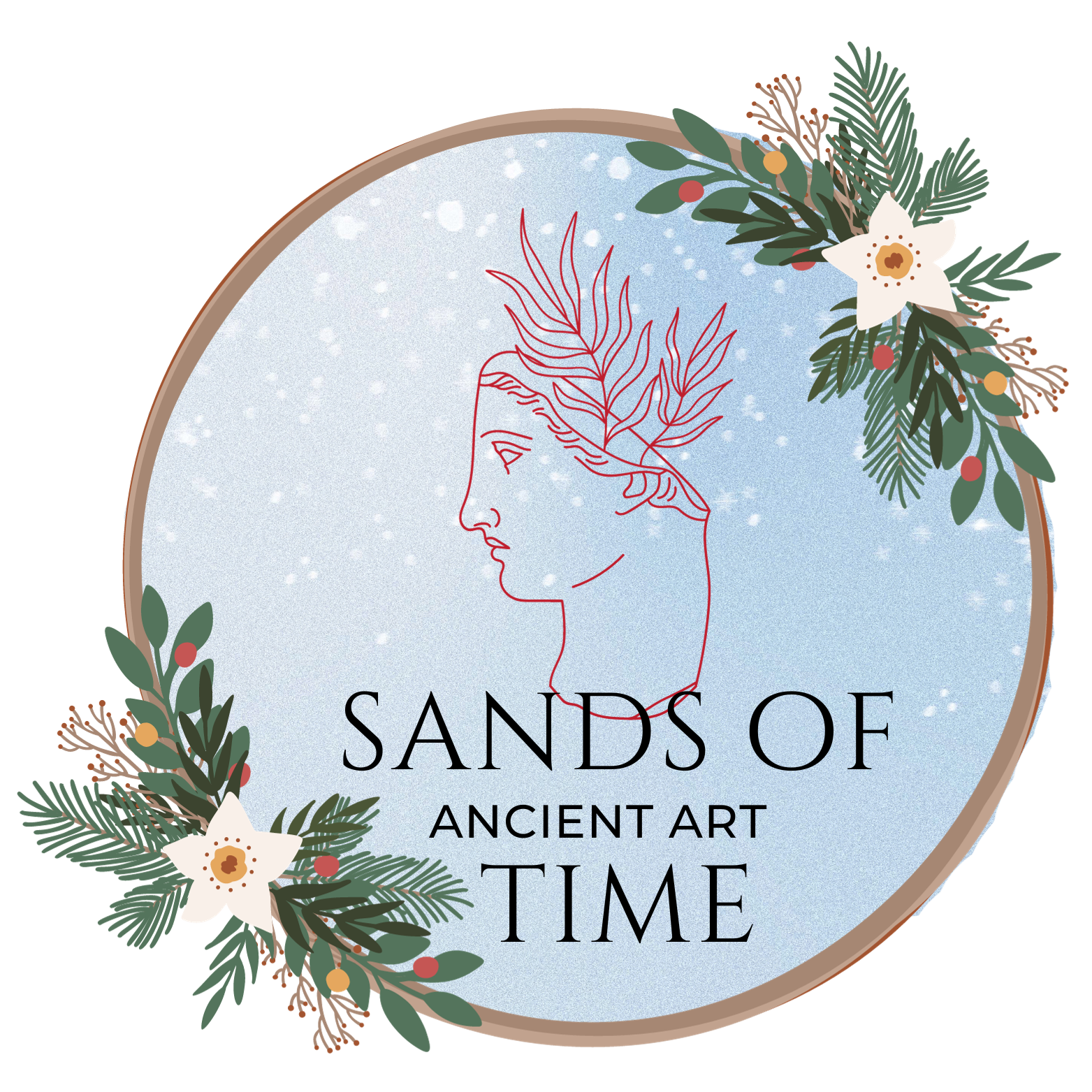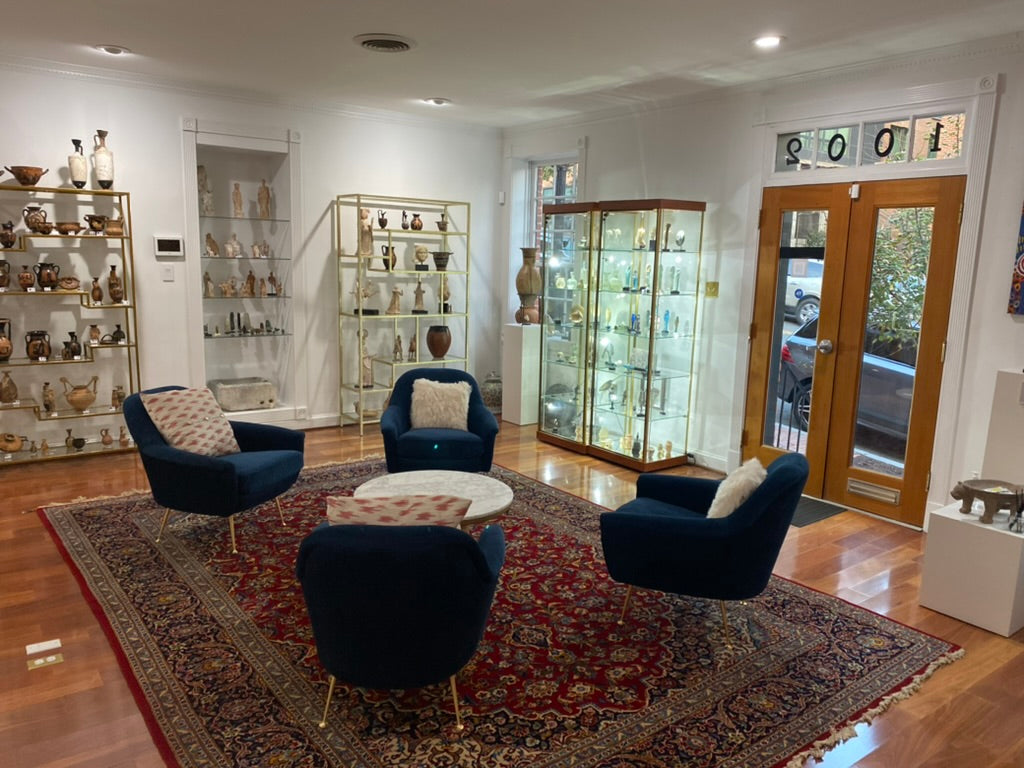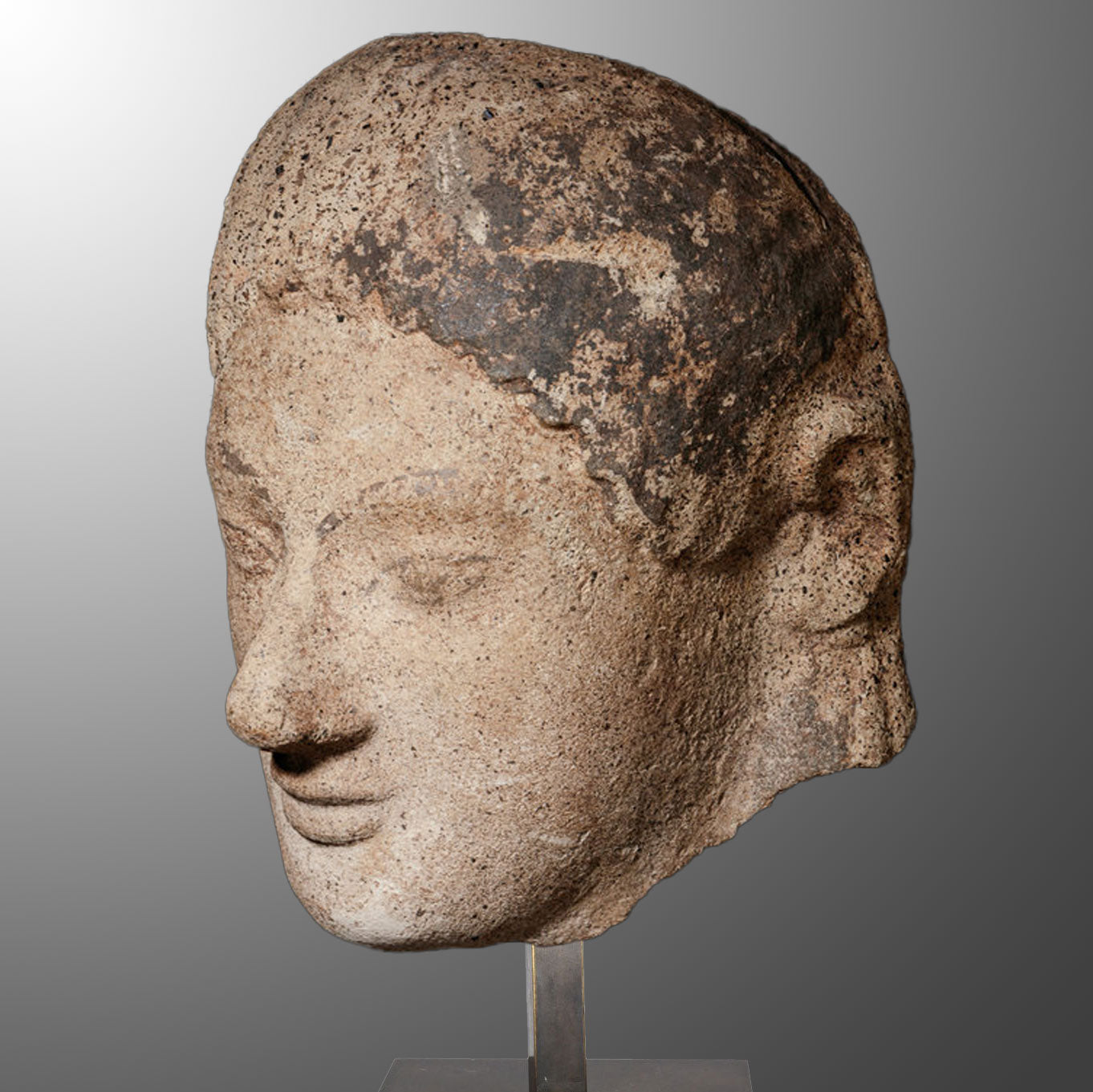
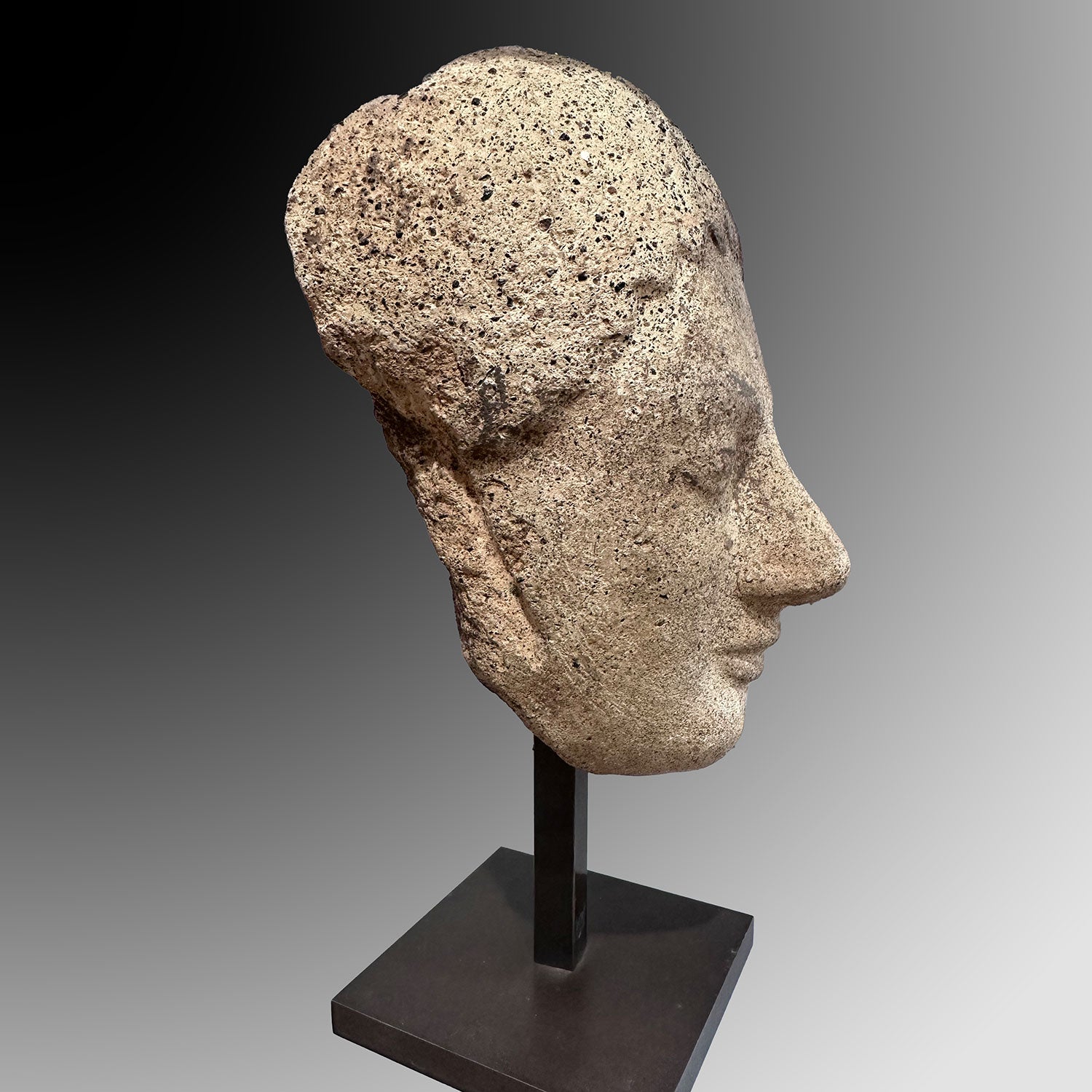
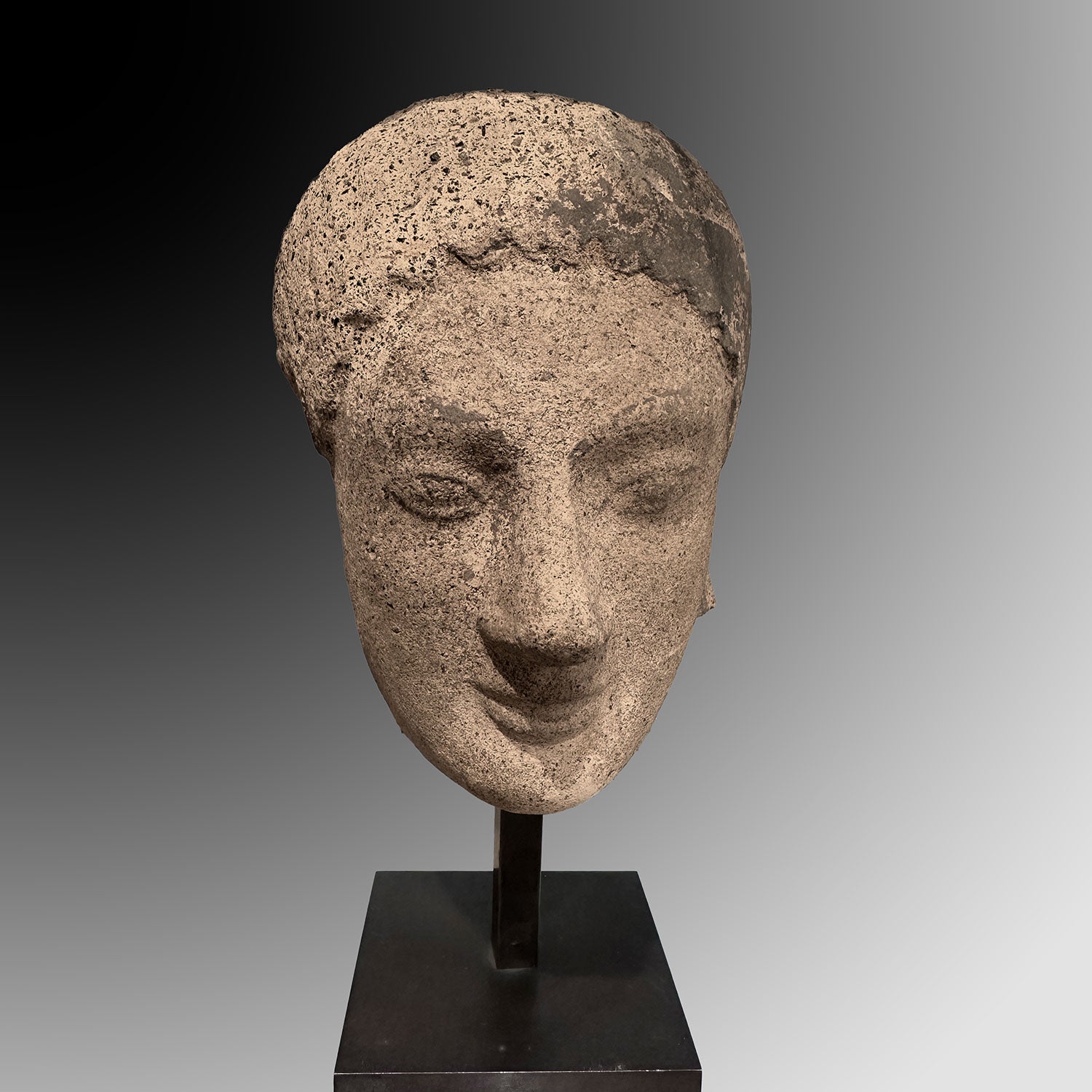
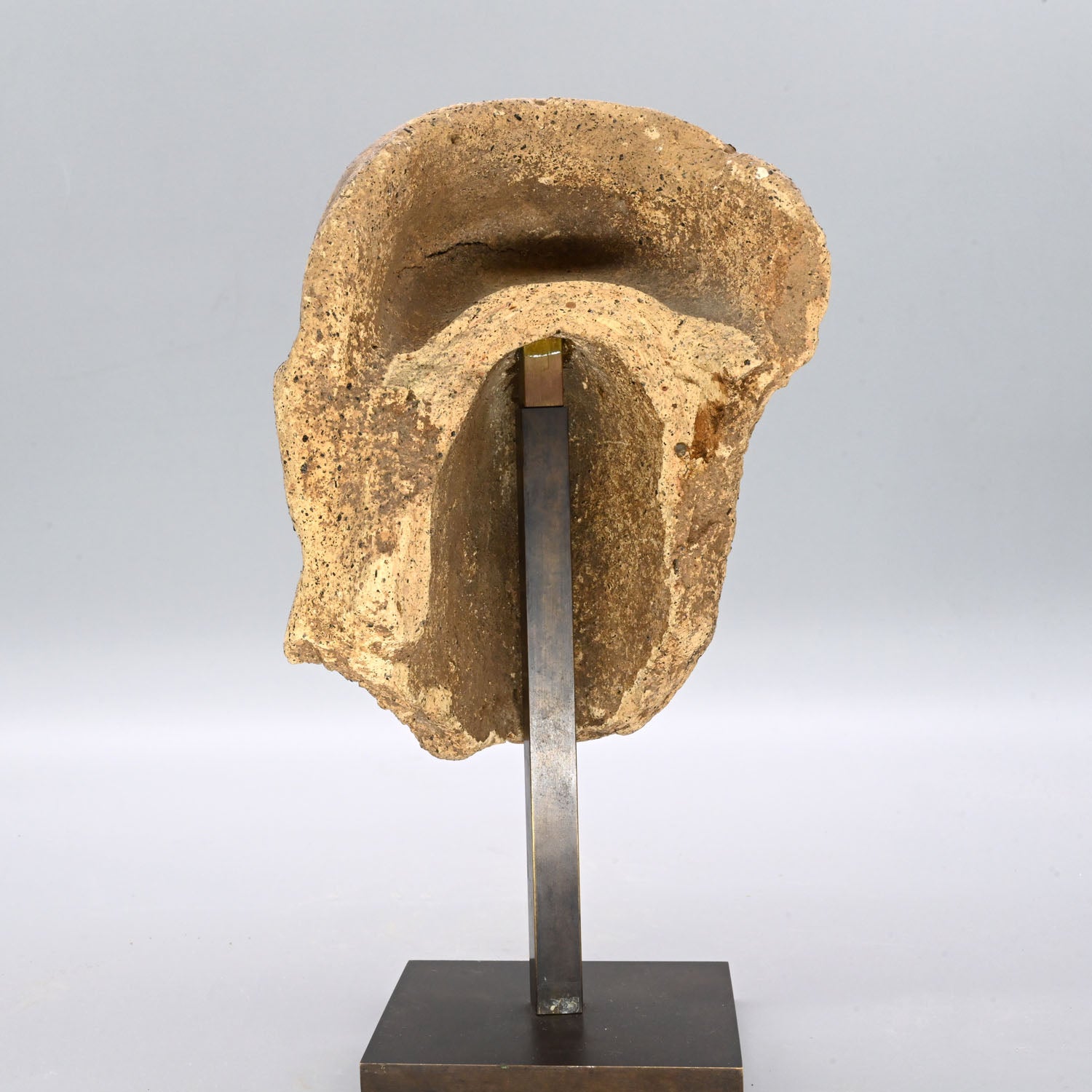
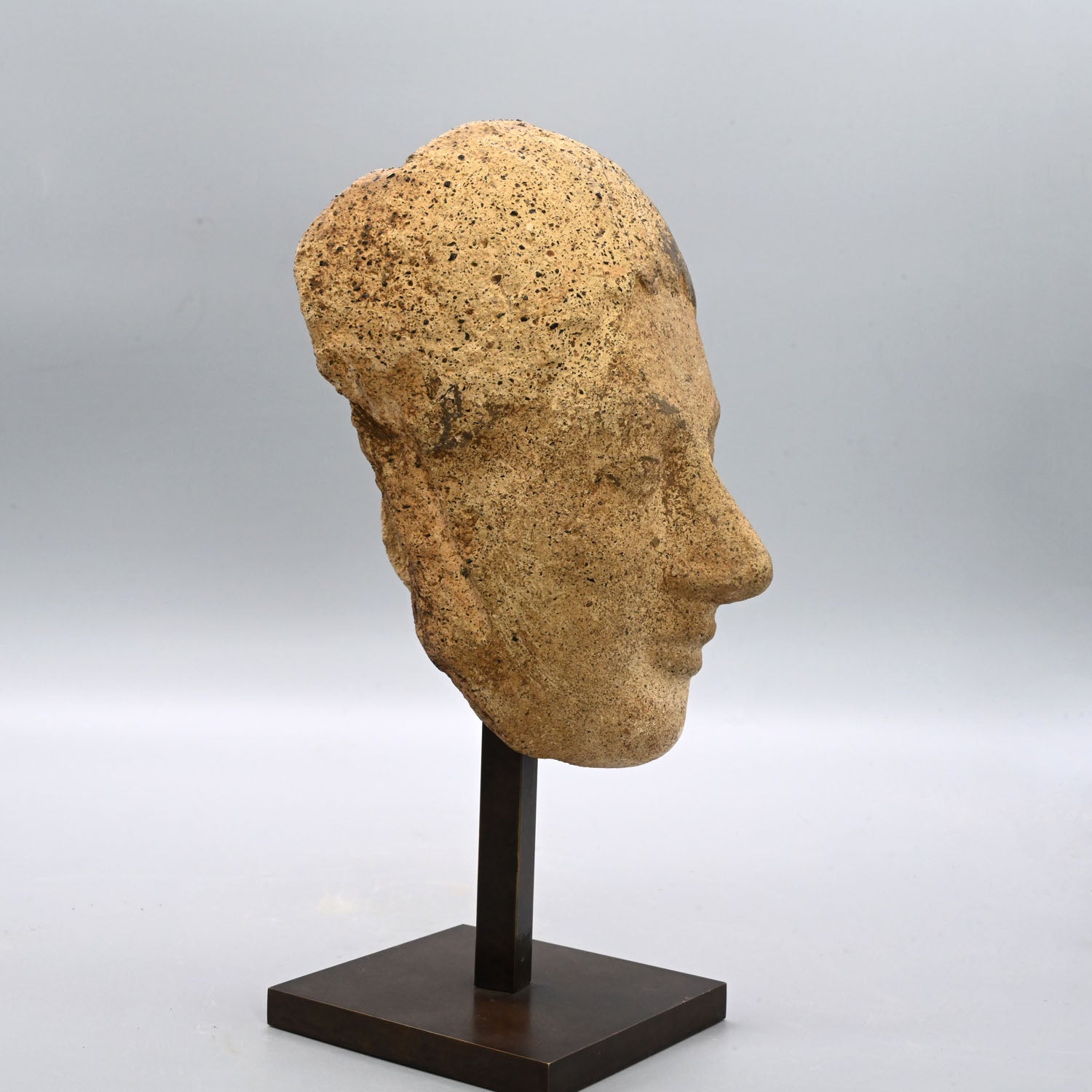
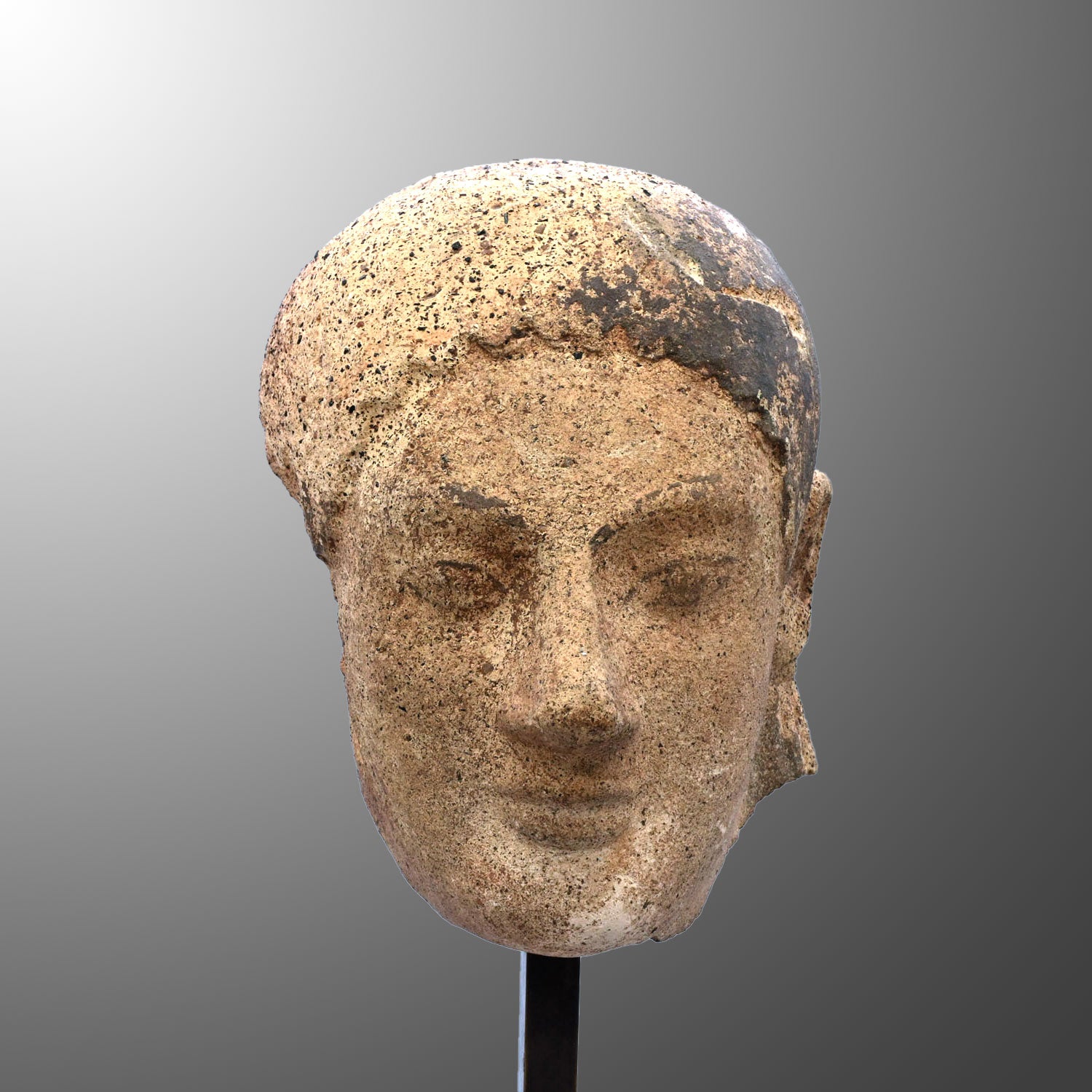
An Etruscan Terracotta Antefix, ca. 6th century BCE
This object qualifies for free and fast worldwide shipping.
In the form of a half-sized head of a man with black curls along the forehead and fine, pointed features. The delicately outlined almond-shaped eyes with dark pupils, high arched brows, high cheekbones, pointed nose, the full lips set in an archaic smile.
During the Archaic period, the workshops at Caere (modern Cerveteri) in southern Etruria produced a large number of architectural terracottas (friezes, covering plaques, acroteria, and antefixes) designed to decorate sacred buildings. Etruscan temples were largely built from perishable materials: wood, bricks, or blocks of tuff for the superstructure; stone for the base. Antefixes, painted bright and garish colors, were placed at the ends of the roof tiles to decorate the plain structures, covering up the wooden beams and, perhaps more importantly, protecting them from the elements. Terracotta was the favored material as it was cheap to make and easily replaceable. Additionally, antefixes were a spiritual prophylactic against the evil eye and other malevolent influences (the Gorgon head motif was particularly popular in order to scare away such spirits).
Cf: David M. Robinson, “Etruscan-Campanian Antefixes and Other Terracottas from Italy at the Johns Hopkins University,” American Journal of Archaeology, Vol. 27, No. 1 (January - March 1923), pp. 3 - 4.
Dimensions: Height: 6 3/4 inches (17.2 cm), Width: 5 1/2 inches (13.4 cm)
Condition: Pigment losses as shown, especially to the top right side of the head, otherwise intact and in good condition overall. Custom mounted.
Provenance: Hótel Drouot, Paris, 12 October 1991, Lot 143.
We ship Tuesday to Friday with FedEx and usually same day if your order is received before 2pm. Within the continental USA, packing, shipping and insurance is free. Depending on size and destination, delivery times range from one to five business days.
For overseas shipments we charge a small flat rate which includes packing, preparation of all customs paperwork, insurance and carrier fees in compliance with all USA and International customs requirements. Overseas shipments are sent using either USPS Priority Mail or FedEx but contact us if you have a shipping preference. International customers are responsible for all duties and taxes.
Sands of Time provides a lifetime, unconditional guarantee of authenticity and provenance. Every object you purchase from us is accompanied by a Certificate of Authenticity, stating culture, provenance, and age.
Furthermore, we conduct due diligence to ensure the item, to the best of our knowledge, has not been illegally obtained from an excavation, architectural monument, public institution, or private property. Wherever possible, reference is made to existing collections or publications.Wherever possible, reference is made to existing collections or publications.
Choose options






